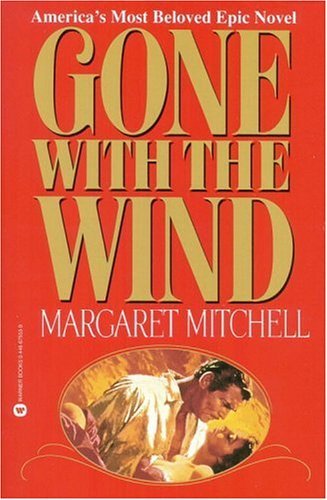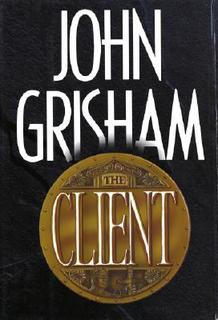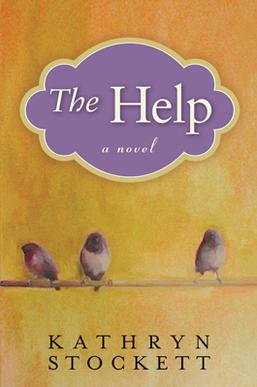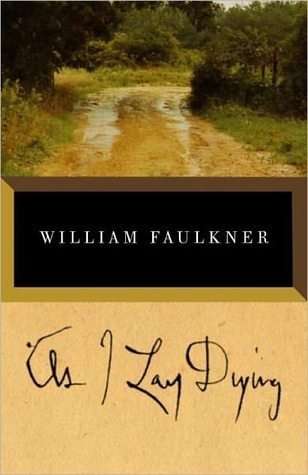 |
| The South will rise again...with books! |
Just like our American, and British cousins, the South is also known for its literature. Defining Southern literature means any book that takes place within the Southern United States, this includes Alabama, Arkansas, Florida, Georgia, Louisiana, Mississippi, North Carolina, South Carolina, Tennessee, Texas, and Virginia (Former Confederate Territories like Missouri are in dispute) and the authors were born and raised there. The style and atmosphere are very different compared to American literature and that's what makes Southern literature unique. Many sensitive liberal Americans hate Southern literature with a passion and have banned some of these books in public libraries, especially from non-Southern states like California and New York. In Southern literature, you will often see dialectic words, slangs, and phrases that Americans and other English-speakers may not understand and many of the stories deal with hardship, poverty, race, religion, family, and other mature complex themes, as Southern life is different down here and many people do not understand. All Southern novels are politically incorrect and unapologetic because that's how we are, and we tell it like it is because we don't care.![]()
Gone with the Wind
Written by Margaret Mitchell in 1936, it's one of the most popular and epic novels in Southern literature that spawn the classic MGM film. This long 1000-page story is set in Clayton County and Atlanta, Georgia, during the American Civil War and Reconstruction Era from the Southern perspective. It depicts the struggles of young Scarlett O'Hara, the spoiled daughter of a well-to-do plantation owner, who must use every means at her disposal to claw her way out of poverty following Sherman's destructive "March to the Sea". American liberals extremely hate this classic book (including the film) and have tried to censor it for many years because of the South's point of view during the war. 🇸🇴
To Kill of a Mockingbird
Another iconic book of Southern literature, written by Harper Lee, the unforgettable novel of a childhood in a sleepy Southern town and the crisis of conscience that rocked it, To Kill A Mockingbird became both an instant bestseller and a critical success when it was first published in 1960. It went on to win the Pulitzer Prize in 1961 and was later made into an Academy Award-winning film, also a classic. Compassionate, dramatic, and deeply moving, To Kill A Mockingbird takes readers to the roots of human behavior - to innocence and experience, kindness and cruelty, love and hatred, humor and pathos. The main character is Atticus Finch, a widowed lawyer in Depression-era Alabama, defends a black man against an undeserved rape charge, and his children against biased prejudice. It deals with Southern life, courage, compassion, gender roles, written and unwritten laws, as well as darker and mature themes such as loss of innocence, rape, bias, and prejudice. It is considered a classic in both Southern and American literature, however, just like Gone with the Wind, it's been subjected to censorship because of its mature themes.
It was adapted into the famaous motion picture in 1963 from Universal.
A sequel, Go Set a Watchman, was released in 2015 before Mrs. Lee's death, however the book gained mixed responses from both readers and critics and has been a subject of controversies for both the book and behind the scenes. People consider it as a cash-grab.
Cold Sassy Tree
The one thing you can depend on in Cold Sassy, Georgia, is that word gets around--fast.
On July 5, 1906, scandal breaks in the small town of Cold Sassy, Georgia (based on the real city of Harmony Grove, now Commerce), when the proprietor of the general store, E. Rucker Blakeslee, elopes with Miss Love Simpson. He is barely three weeks a widower, and she is only half his age and a Yankee to boot. As their marriage inspires a whirlwind of local gossip, fourteen-year-old Will Tweedy suddenly finds himself eyewitness to a family scandal, and that’s where his adventures begin.
Cold Sassy Tree is the undeniably entertaining and extraordinarily moving account of small-town Southern life in a bygone era. Brimming with characters who are wise and loony, unimpeachably pious and deliciously irreverent, Olive Ann Burns’s classic bestseller is a timeless, funny, and resplendent treasure. The book explores themes such as religion, death, and social taboos. There's an "old school" feel here, an indescribable quality that takes me back to sitting in trees as a child, with my back supported by the tree trunk. An incomplete sequel to the novel, Leaving Cold Sassy, was published in 1992 after Burns' death.
Written by William Faulkner in 1929, The Sound and the Fury is set in Jefferson, Mississippi, in the first third of the 20th century. The novel centers on the Compson family, former Southern aristocrats who are struggling to deal with the dissolution of their family and its reputation. The tragedy of the Compson family features some of the most memorable characters in literature: beautiful, rebellious Caddy; the manchild Benjy; haunted, neurotic Quentin; Jason, the brutal cynic; and Dilsey, their black servant. Their lives fragmented and harrowed by history and legacy, the character’s voices and actions mesh to create what is arguably Faulkner’s masterpiece and one of the greatest novels of the twentieth century. Probably one of the most depressing stories ever with mature themes of incest, castration, suicide, prejudice, misogyny—this one has it all.
Cold Mountain
Charles Frazier's novel requires patience to understand this beautiful story, it tells the story of W. P. Inman, a wounded deserter from the Confederate army near the end of the American Civil War who walks for months to return to Ada Monroe, the love of his life; the story shares several similarities with Homer's Odyssey. As Inman makes a relentless and dangerous journey back home to the North Carolina Appalachians at Cold Mountain, North Carolina, and to the woman he intends spending the rest of his life with. The themes deal with Right and Wrong; Revenge and Forgiveness, PTSD and struggles with war. The novel, Frazier's first, became a major best-seller, selling roughly three million copies worldwide. It was adapted into an Academy Award-winning film of the same name in 2003 from Miramax.
The Client
John Grishman's 1994 legal thriller is takes place in a weedy clearing on the outskirts of Memphis, Tennessee, two boys watch a shiny Lincoln pull up to the curb...Eleven-year-old Mark Sway and his younger brother were sharing a forbidden cigarette when a chance encounter with a suicidal lawyer left Mark knowing a bloody and explosive secret: the whereabouts of the most sought-after dead body in America. Now Mark is caught between a legal system gone mad and a mob killer desperate to cover up his crime. And his only ally is a woman named Reggie Love, who has been a lawyer for all of four years. Prosecutors are willing to break all the rules to make Mark talk. The mob will stop at nothing to keep him quiet. And Reggie will do anything to protect her client --even take a last, desperate gamble that could win Mark his freedom... or cost them both their lives.
It was adapted into a film a year after the book's publication, starring Susan Sarandon and Tommy Lee Jones, then a TV series a year after that from Warner Bros.
The Help
Kathryn Stockett writes her first debut historical fiction about African Americans working in white households in Jackson, Mississippi, during the early 1960s and told primarily from the first-person perspectives of three women: Aibileen Clark, Minny Jackson, and Eugenia "Skeeter" Phelan.
The novel recount the story of a young white woman and aspiring journalist Eugenia "Skeeter" Phelan. The story focuses on her relationship with two black maids, Aibileen Clark and Minny Jackson, during the Civil Rights Movement in 1963 Jackson, Mississippi. In an attempt to become a legitimate journalist and writer, Skeeter decides to write a book from the point of view of the maids, exposing the prejudice they face as they work for white families. Black domestic workers in 1960s America were referred to as "the help", hence the title of the journalistic exposé, the novel and the film.
The themes of the novel talk about segregation, work ethics, and gender roles, in the historical context. Liberal Americans hate this book with a passion. It was adapted into a film from Dreamworks.
The Civil War: A Narrative
A three volume, 2,968-page, 1.2 million-word history of the American Civil War by Shelby Foote. Previously known as a novelist, Foote is most famous for this non-fictional narrative history. While it touches on political and social themes, the main subject of the work is military history. The individual volumes include Fort Sumter to Perryville (1958), Fredericksburg to Meridian (1963), and Red River to Appomattox (1974).
"You probably cannot legitimately claim knowledge of the Civil War -- at least not out loud -- without having read Shelby Foote's masterpiece which, tragically, probably could not be published today. You see it is by a Southerner, an honest one, who does not simply apologize for and condemn slavery as demanded by today's Red Guards in publishing and the media. Instead, here is an intelligent and original telling of the whole agony and valor.
The three volumes, I) Sumter to Perryville, II) Fredericksburg to Meridian, and III) Red River to Appomattox, each almost run the length of "War and Peace." And you can't read any of it without thinking about the contents. It's a minor career. But so worth it.
I doubt anyone who reads this will ever again think of the principal actors -- Lincoln, Davis, Stanton, Grant, Lee, McClellan, "Stonewall," and many others -- without seeing them in the light cast by Foote. He measures all and spares none. Just one example: you'd think that Lee would tower above the others in a true Southerner's treatment. Not so. Foote details many faults in Lee's personality, abilities, and actions." - Rex Fuller
This gives you the feeling that you finally grasp the interweaving forces of international relations, politics, generalship, faith, foible, and fiasco that drove the many, many events of the War.
Look Homeward, Angel
It's a 1929 novel by Thomas Wolfe. It is Wolfe's first novel and is considered a highly autobiographical coming-of-age story as the main character of Eugene Gant is generally believed to be a depiction of Wolfe himself. The novel briefly recounts Eugene's father's early life, but primarily covers the span of time from Eugene's birth in 1900 to his definitive departure from home at the age of 19. The young man’s burning desire to leave his small town and tumultuous family in search of a better life, in 1929. The setting is a fictionalization of his hometown of Asheville, North Carolina, called "Altamont, Catawba", in the novel. It's a long but very memorable, portrait of a North Carolina family.
Playwright Ketti Frings wrote a theatrical adaptation of Wolfe's work in a 1957 play of the same title. Ketti Frings's screenplay was made into a TV movie, released by NBC in February 1972. The film was directed by Paul Bogart and starred Timothy Bottoms as Eugene Gant, E.G. Marshall as W.O. Gant, and Geraldine Page as Eliza.
A Christmas Memory
Based on Truman Capote's childhood in 1930's Alabama, the largely autobiographical story, which takes place in the 1930s, describes a period in the lives of the seven-year-old narrator named Buddy and an unnamed elderly woman who is his distant cousin and best friend. Seven-year-old Buddy inaugurates the Christmas season by crying out to his cousin, Miss Sook Falk: "It's fruitcake weather!" Thus begins an unforgettable portrait of an odd but enduring friendship between two innocent souls--one young and one old--and the memories they share of beloved holiday rituals. The evocative narrative focuses on country life, friendship, and the joy of giving during the Christmas season, and it also gently yet poignantly touches on loneliness and loss. Now a holiday classic, "A Christmas Memory" has been broadcast, recorded, filmed, and staged multiple times, in award-winning productions. If you haven’t read this book, I highly recommend it! It’s a story anyone of any age can enjoy, but the older one gets, the more meaningful stories like this one are. No wonder this book is considered a holiday classic!
All over but the Shoutin'
The extraordinary gifts for evocation and insight and the stunning talent for storytelling that earned Rick Bragg a Pulitzer Prize for feature writing in 1996 are here brought to bear on the wrenching story of his own family's life. It is the story of a violent, war-haunted, alcoholic father and a strong-willed, loving mother who struggled to protect her three sons from the effects of poverty and ignorance that had tainted her own life. It is the story of the life Bragg was able to carve out for himself on the strength of his mother's encouragement and belief.
"A raw and unsentimental, but ultimately uplifting, story of a poor, white southern woman, as told by Bragg, her loving, bitter and troubled son. In turn heartbreaking and beautiful, this is a young man's love letter to his mother, and to the country that shaped and very nearly broke him. A fantastic story, made real by Bragg's unpretentious and painfully honest writing. Brilliant" - Andy Mar
The Prince of Tides
Pat Conroy's 1986 novel revolves around traumatic events that affected former football player Tom Wingo's relationship with his immediate family. As Tom grapples with his twin sister's attempted suicide and the absence of his charismatic older brother Luke, the story outlines life in the south and the events that threaten to tear Tom's family apart. Filled with the vanishing beauty of the South Carolina low country as well as the dusty glitter of New York City, The Prince of Tides is Pat Conroy at his very best. It was adapted into a film in 1991 from Columbia Pictures. Both the film and the novel have inspired or been referenced in other creative works.
Interview with the Vampire
Anne Rice's writes her first Southern gothic horror and vampire novel. Based on a short story Rice wrote around 1968, the 1976 novel centers on vampire Louis de Pointe du Lac, a young indigo plantation owner living in the Louisiana, who tells the story of his life to a reporter. Louis recounts how he became a vampire at the hands of the radiant and sinister Lestat and how he became indoctrinated, unwillingly, into the vampire way of life.
It was originally written as a short story, then book took off as Anne wrote it, spinning the tragic and triumphant life experiences of a immortal soul. As well as the struggles of its characters, the novel captures the political and social changes of two continents of Europe and North America. The novel also introduces Lestat, Anne's most enduring character, a heady mixture of attraction and revulsion. The book, full of lush description, centers on the themes of immortality, change, loss, sexuality, and power. The is the first book of Anne Rice's Vampire Chronicles.
The movie based on the book was released in 1994 from Warner Bros. starring Tom Cruise, Brad Pitt, Kristen Dunst and Antonio Banderas.
As I Lay Dying
Another novel written by William Faulkner in 1930, under the genre of Southern gothic, modernist, and black comedy, it is the story of the death of Addie Bundren and her poor, rural family's quest and motivations—noble or selfish—to honor her wish to be buried in her hometown of Jefferson, Mississippi. Narrated in turn by each of the family members -- including Addie herself -- as well as others; the novel ranges in mood, from dark comedy to the deepest pathos. It is considered an influential classic.
Absalom, Absalom!
Three times in a row, William Faulkner classic 1936 Southern Gothic novel, Absalom, Absalom!, details the rise and fall of Thomas Sutpen, a white man born into poverty in western Virginia who moves to Mississippi with the dual aims of gaining wealth and becoming a powerful family patriarch. Sutpen's story is told by several narrators, allowing the reader to observe variations in the saga as it is recounted by different speakers. This unusual technique spotlights one of the novel's central questions: To what extent can people know the truth about the past? Absalom, Absalom! is a full of dark secrets and murky mysteries ghost story – the ghosts of the past rise and follow you everywhere. The 1983 Guinness Book of World Records says the "Longest Sentence in Literature" is a sentence from Absalom, Absalom! containing 1,288 words. The sentence can be found in Chapter 6; it begins with the words "Just exactly like father" and ends with "the eye could not see from any point".
A Confederacy of Dunces
John Kennedy Toole's mature satire and dark tragicomedy was written 21 years after his death and became a cult classic. Ignatius J. Reilly, is an educated but slothful hot-dog loving 30-year-old man-child living with his mother in the Uptown neighborhood of early-1960s New Orleans who, in his quest for employment, has various adventures with colorful French Quarter characters and lots of funny humor. Ignatius Jacques Reilly is something of a modern Don Quixote—eccentric, idealistic, and creative, sometimes to the point of delusion. All of the hard-to-like characters are exaggerated and over-the-top. Toole's depictions amplify human faults to a degree that it becomes hilarious. His characters, though awful and flawed, are so well depicted and real. There is a lot of dialogue and Toole writes the accent very well, that made it even more fun to read as you could hear the distinct New Orleans patois dialect. The book is famous for its rich depiction of New Orleans and the city's dialects, including Yat. Many locals and writers think that it is the best and most accurate depiction of the city in a work of fiction. New Orleans (and the Louisiana in general), is unique from the rest of the South with Cajun French influence.
"There is never a dull moment here and the implicit criticism of American consumerism was and remains revelatory and thought-provoking. But what really clinches the book is Ignatius and his poor long-suffering, overbearing, manipulative, compulsively Catholic mother and his insane ex-girlfriend. Somewhere between Portnoy's Complaint and Don Quixote, this is a true modern masterpiece and well-worth the read." -Michael Finocchiaro
A relentless belly full of laughs and modern classic of comedy; this is one of the few novels that are truly necessary, funny and indispensable. Shame the author never lived to see it published. It's not for everyone.
So far, it hasn't been adapted into a motion picture due to delepment hell.
The Amulet
This 1979 Southern gothic horror novel by Michael McDowell (Beetlejuice and The Nightmare Before Christmas) takes place in 1965 when a rifle range accident leaves Dean Howell disfigured and in a vegetative state, his wife Sarah finds her dreary life in Pine Cone, Alabama made even worse. After long and tedious days on the assembly line, she returns home to care for her corpse-like husband while enduring her loathsome and hateful mother-in-law, Jo. Jo blames the entire town for her son’s mishap, and when she gives a strange piece of jewelry to the man, she believes most responsible, a series of gruesome deaths is set in motion. Sarah believes the amulet has something to do with the rising body count, but no one will believe her. As the inexplicable murders continue, Sarah and her friend Becca Blair have no choice but to track down the amulet themselves, before it’s too late. This 80's-style bloody violent horror novel overrides all and affects everyone regardless of who you are. Michael McDowell is sometimes called the Stephen King of the South.
The Elementals
Another Southern gothic horror novel by Michael McDowell is about two wealthy families from Mobile, Alabama, the McCrays and the Savages. The two families have been friends for years, and the McCray daughter is married to the surviving Savage son. But the Savages are an old and strange family, and after the traumatic funeral of the Savage matriarch, the two families descend on their shared vacation spot: Beldame. Beldame consists of three identical old Victorian houses on a spit of sand in the Gulf of Mexico. One house traditionally occupied by the McCrays, another by the Savages, and one that is slowly being consumed by the sand dunes. But as the days drag by, it becomes more and more obvious that the abandoned house isn’t so empty. Something is occupying the crumbling building, something evil, something hungry . . . something they don't like to think about, is thinking about them...and about all the ways to make them die.
Their Eyes Were Watching God
Written in 1937 by an African American from Alabama, Zora Neale Hurston, this mature novel is about the life of a black woman's perspective in the South. "Fair and long-legged, independent and articulate, Janie Crawford sets out to be her own person -- no mean feat for a black woman in the '30s. Janie's quest for identity takes her through three marriages and into a journey back to her roots." The novel deals with mature complex themes such as domestic abuse, poverty, infidelity, gender roles, etc., and it uses the black Southern dialect for the dialogue. The novel is quite unique and non-race bait.
This isn't all of Southern literature, but we hope this list will pick your interest in reading them, audio versions are available too.

.jpg/388px-To_Kill_a_Mockingbird_(first_edition_cover).jpg)

.jpg/327px-The_Sound_and_the_Fury_(1929_1st_ed_dust_jacket).jpg)










.jpg/329px-Absalom%2C_Absalom!_(1936_1st_ed_cover).jpg)





Comments